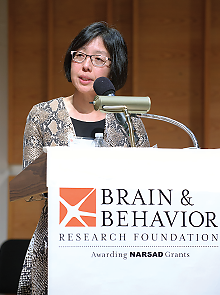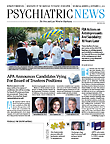On October 24, the Brain and Behavior Research Foundation (BBRF) held its 27th annual New York City Mental Health Research Symposium. The event showcased the eight recipients of the 2014 BBRF Outstanding Achievement Prizes, which are one of the largest awards in the mental health field (see box).
The symposium, attended by both scientists and the public, showcased how the frontiers of psychiatry are being extended on multiple fronts. Patrick Sullivan, M.D., of the University of North Carolina discussed the advancements made by the Psychiatric Genomics Consortium in unlocking the genetic components of schizophrenia, while Anita Thapar, M.B.B.Ch., Ph.D., of Cardiff University in Wales described her recent work connecting attention-deficit/hyperactivity disorder (ADHD) risk genes with behaviors in the general population (see article at right).
Other speakers highlighted advances in 3D imaging of living neurons, some exciting preliminary clinical work on deep brain stimulation for depression, and an approach to predict schizophrenia risk using a brainwave phenomenon known as mismatch negativity.
While these advances offer much hope, David Braff, M.D., a distinguished professor of psychiatry at the University of California, San Diego, did caution that “science still suffers from a knowledge-to-wisdom gap.”
However, the size, enthusiasm, and engagement of the audience—many of whom spoke openly about their own experiences with mental illness—hinted that this field is continuing to turn the corner in public perception, leading to better recognition and stronger compliance with parity insurance requirements and bring better treatment to more people.
While much of the event was devoted to established investigators, the last portion was handed over to the future innovators in psychiatry as the BBRF recognized two 2013 NARSAD Young Investigator awardees—both of whom are APA members—who are leading the next wave of discovery.
Dorothy Kit, M.D., an assistant professor at the University of Pittsburgh, spoke about her research into the use of midday light therapy to treat bipolar disorder. While pilot studies suggest that light therapy holds some promise, her work also hinted at a connection between a depressed state and a reduced contrast sensitivity (making light-dark transitions). She is continuing to explore this connection and tease out on a biological level how the brain responds to light therapy.
Jennifer Coughlin, M.D., an assistant professor at Johns Hopkins University, discussed her research into the link between inflammation and schizophrenia. Using both biochemical analysis of cerebrospinal fluid and brain imaging techniques, she has identified changes in the inflammatory marker interleukin-6 and its receptor in people with schizophrenia. She plans to continue testing biomarkers in people with the disease, as well as in at-risk individuals to identify targets for early diagnosis and treatment.
As Jeffrey Borenstein, M.D., president of the BBRF (and editor in chief of Psychiatric News), said, “Since 1987 the foundation has awarded over $320 million in NARSAD grants to over 3,800 investigators, but that is only half the story. The findings generated from that $320 million turned into over $3 billion in additional funding.
“These grants are helping young and innovative scientists get the foothold they need for long-term success.” ■

